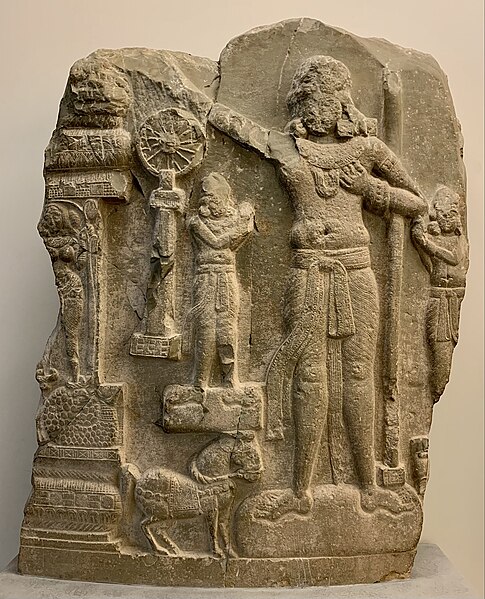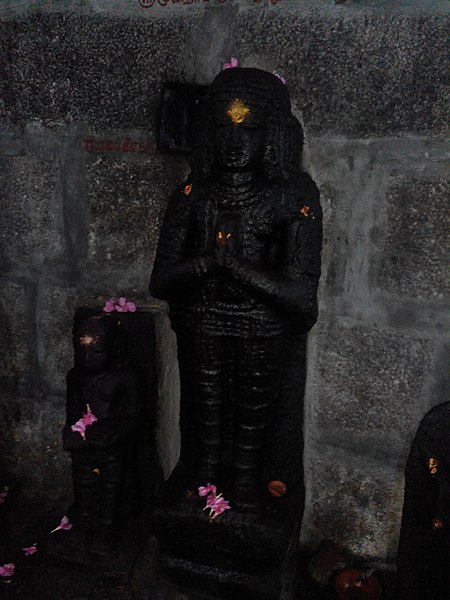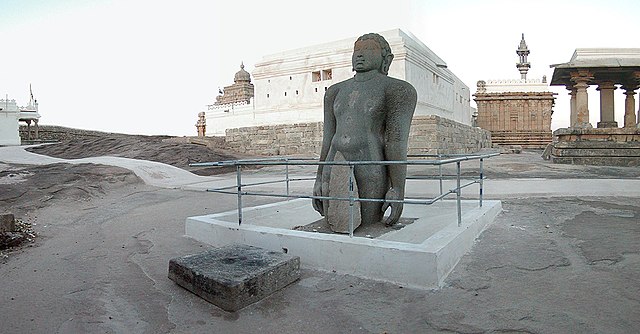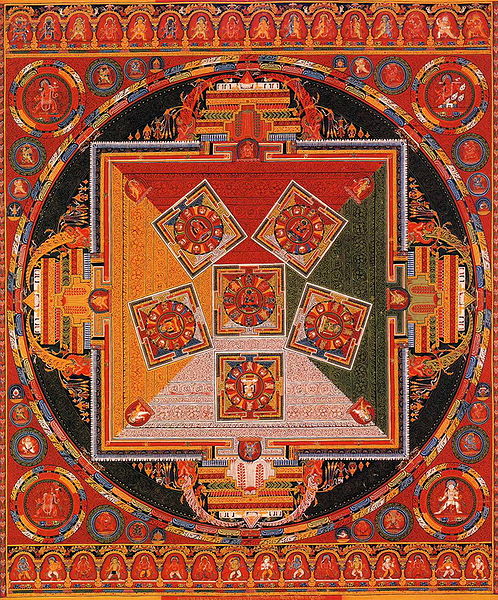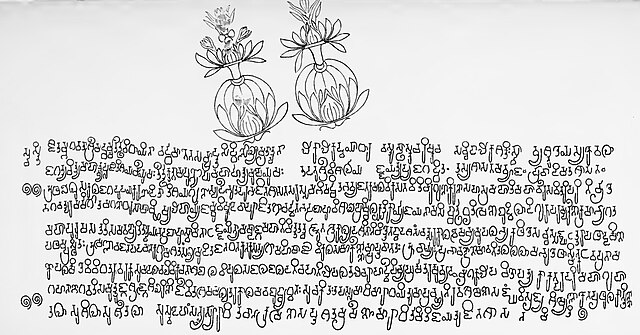Chakravarti (Sanskrit term)
A chakravarti is an ideal universal ruler, in the history, religion, and mythologies of India. The concept is present in Indian subcontinent cultural traditions, narrative myths and lore. There are three types of chakravarti: chakravala chakravarti, an emperor who rules over all four of the continents ; dvipa chakravarti, a ruler who governs only one of those continents; and pradesha chakravarti, a monarch who leads the people of only a part of a continent, the equivalent of a local king. Dvipa chakravarti is particularly one who rules the entire Indian subcontinent (as in the case of the Mauryan Empire. The first references to a Chakravala Chakravartin appear in monuments from the time of the early Maurya Empire, in the 4th to 3rd century BCE, in reference to Chandragupta Maurya and his grandson Ashoka.
Chakravarti, from Amaravati Stupa, 1st century CE, using the "Imperial Gesture" and surrounded by his attributes. Possibly represents Ashoka of the Mauryan Empire.
Chola ruler Kulothunga III would be addressed as Chakravarti.
Statue of Bharata Chakravartin at Shravanabelagola
Tibetan mandala of the six chakravartis
Chandragupta Maurya was the founder of the Maurya Empire, a geographically-extensive empire based in Magadha. He reigned from 320 BCE to 298 BCE. The Magadha kingdom expanded to become an empire that reached its peak under the reign of his grandson, Ashoka the Great, from 268 BCE to 231 BCE. The nature of the political formation that existed in Chandragupta's time is not certain. The Mauryan empire was a loose-knit one with large autonomous regions within its limits.
A modern statue depicting Chandragupta Maurya, Laxminarayan Temple, Delhi
7th-century Bhadrabahu inscription at Shravanabelagola (Sanskrit, Purvahale Kannada script). This is the oldest inscription at the site, and it mentions Bhadrabahu and Prabhacandra. Lewis Rice and Digambara Jains interpret Prabhacandra to be Chandragupta Maurya, while others such as J F Fleet, V. R. Ramachandra Dikshitar, and Svetambara Jains state this interpretation is wrong.
Chandragupta's guru was Chanakya, with whom he studied as a child and with whose counsel he built the Empire. This image is a 1915 attempt at depicting Chanakya.
Chandragupta had defeated the remaining Macedonian satrapies in the northwest of the Indian subcontinent by 317 BCE.

